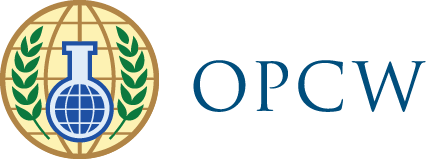THE HAGUE, Netherlands – 8 April 2020 – The Organisation for the Prohibition of Chemical Weapons (OPCW) released today the findings of the first report by the OPCW Investigation and Identification Team (IIT). The IIT is responsible for identifying the perpetrators of the use of chemical weapons in the Syrian Arab Republic where the OPCW Fact-Finding Mission (FFM) has determined that chemical weapons have been used or likely used in Syria.
The IIT’s first report sets out its mandate, the legal and practical challenges of its work, and the findings of the investigations conducted between June 2019 and March 2020, focusing on the incidents in Ltamenah, Syrian Arab Republic on 24, 25, and 30 March 2017. The IIT’s investigation and analysis included a comprehensive review of all of the information obtained including: interviews with persons who were present in the relevant places at the time of the incidents, analysis of samples and remnants collected at the sites of the incidents, review of the symptomatology reported by casualties and medical staff, examination of imagery, including satellite images, and extensive consultation of experts. The investigation relied on relevant FFM reports as well as on samples and other material obtained directly by the Technical Secretariat in the territory of Syria.
The report reached the following conclusions:
- At approximately 6:00 on 24 March 2017, an Su-22 military airplane belonging to the 50th Brigade of the 22nd Air Division of the Syrian Arab Air Force, departing from Shayrat airbase, dropped an M4000 aerial bomb containing sarin in southern Ltamenah, affecting at least 16 persons.
- At approximately 15:00 on 25 March 2017, a helicopter of the Syrian Arab Air Force, departing from Hama airbase, dropped a cylinder on the Ltamenah hospital; the cylinder broke into the hospital through its roof, ruptured, and released chlorine, affecting at least 30 persons.
- At approximately 6:00 on 30 March 2017, an Su-22 military airplane belonging to the 50th Brigade of the 22nd Air Division of the Syrian Arab Air Force, departing from Shayrat airbase, dropped an M4000 aerial bomb containing sarin in southern Ltamenah, affecting at least 60 persons.
In his recorded statement to States Parties, OPCW Director-General, H.E. Mr Fernando Arias, underscored that:
“[t]he IIT is not a judicial or quasi-judicial body with the authority to assign individual criminal responsibility, nor does the IIT have the authority to make final findings on non-compliance with the Convention. … It is now up to the Executive Council and the Conference of the States Parties to the Chemical Weapons Convention, the United Nations Secretary-General, and the international community as a whole to take any further action they deem appropriate and necessary.”
The IIT Coordinator, Mr Santiago Oñate-Laborde stated in his remarks that:
“[t]he IIT has concluded that there are reasonable grounds to believe that the perpetrators of the use of sarin as a chemical weapon in Ltamenah on 24 and 30 March 2017, and the use of chlorine as a chemical weapon on 25 March 2017 were individuals belonging to the Syrian Arab Air Force. … Attacks of such a strategic nature would have only taken place on the basis of orders from the higher authorities of the Syrian Arab Republic military command. Even if authority can be delegated, responsibility cannot. … In the end, the IIT was unable to identify any other plausible explanation.”
The first report by the OPCW Investigation and Identification Team has been shared with all States Parties to the Chemical Weapons Convention and the United Nations Secretary-General.
Background
The Organisation for the Prohibition of Chemical Weapons’ (OPCW) Investigation and Identification Team (IIT) is responsible for identifying the perpetrators of the use of chemical weapons in the Syrian Arab Republic. The IIT identifies and reports on all information potentially relevant to the origin of those chemical weapons in those instances in which the OPCW’s Fact-Finding Mission (FFM) determines or has determined that use or likely use occurred, and cases for which the OPCW-UN Joint Investigative Mechanism (JIM) has not identified the perpetrators of chemical weapons use in Syria.
The IIT is comprised of a multi-disciplinary team of staff, which includes experienced investigators, analysts and a legal adviser who are led by a Coordinator. The team conducts its activities in an impartial and objective manner. The IIT is part of the OPCW Technical Secretariat and functions under the authority of the OPCW Director-General. The Technical Secretariat provides regular reports on its investigations to the OPCW’s Executive Council and to the United Nations Secretary-General for their consideration.
The OPCW Technical Secretariat established the IIT as mandated by the decision of the Conference of the States Parties titled Addressing the Threat from Chemical Weapons Use (C-SS-4/DEC.3) dated 27 June 2018.
As the implementing body for the Chemical Weapons Convention, the OPCW, with its 193 Member States, oversees the global endeavour to permanently eliminate chemical weapons. Since the Convention’s entry into force in 1997, it is the most successful disarmament treaty eliminating an entire class of weapons of mass destruction.
Over 97% of all chemical weapon stockpiles declared by possessor States have been destroyed under OPCW verification. For its extensive efforts in eliminating chemical weapons, the OPCW received the 2013 Nobel Peace Prize.
More Information
- First Report by the OPCW Investigation and Identification Team
- Director-General’s Statement on the First Report by the OPCW Investigation and Identification Team
- IIT Coordinator’s Remarks on the First Report by the OPCW Investigation and Identification Team
- Frequently Asked Questions about the OPCW Investigation and Identification Team
- Investigation and Identification Team
